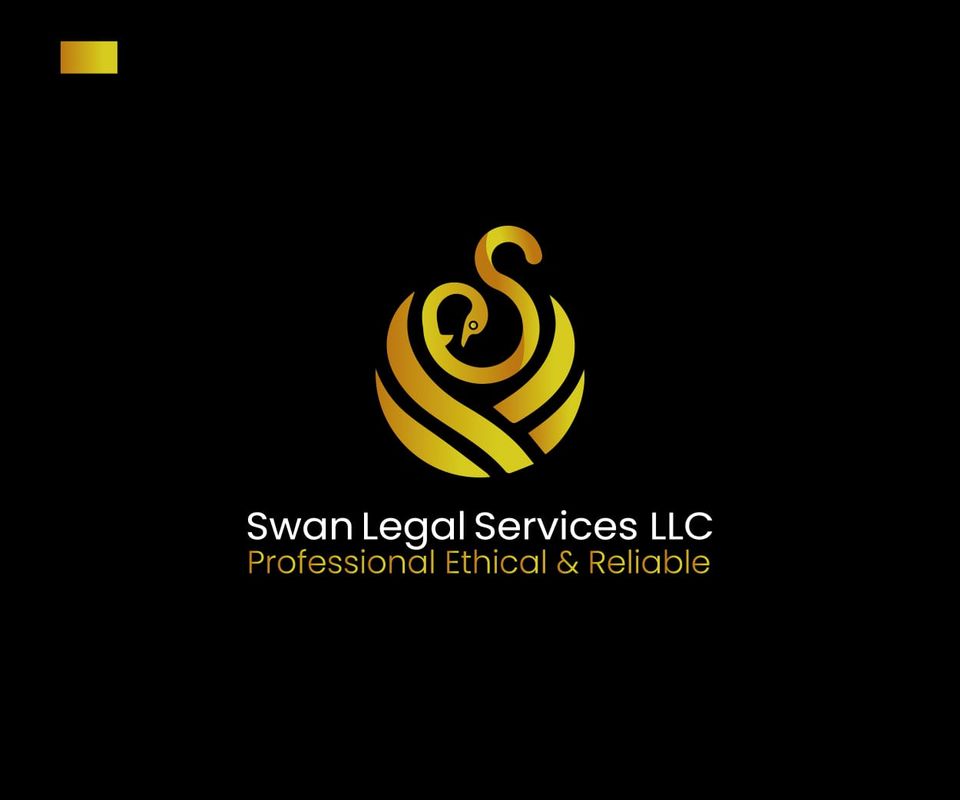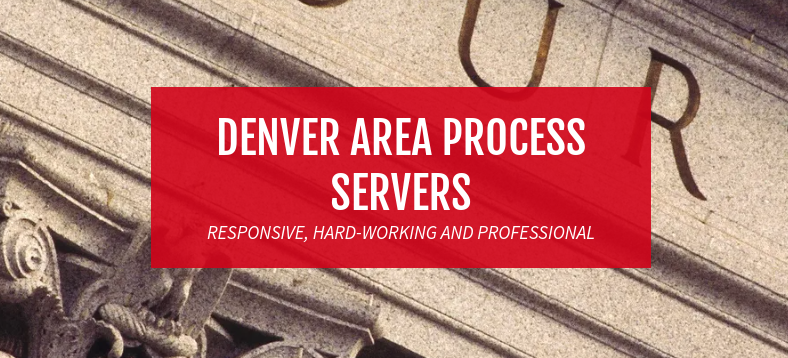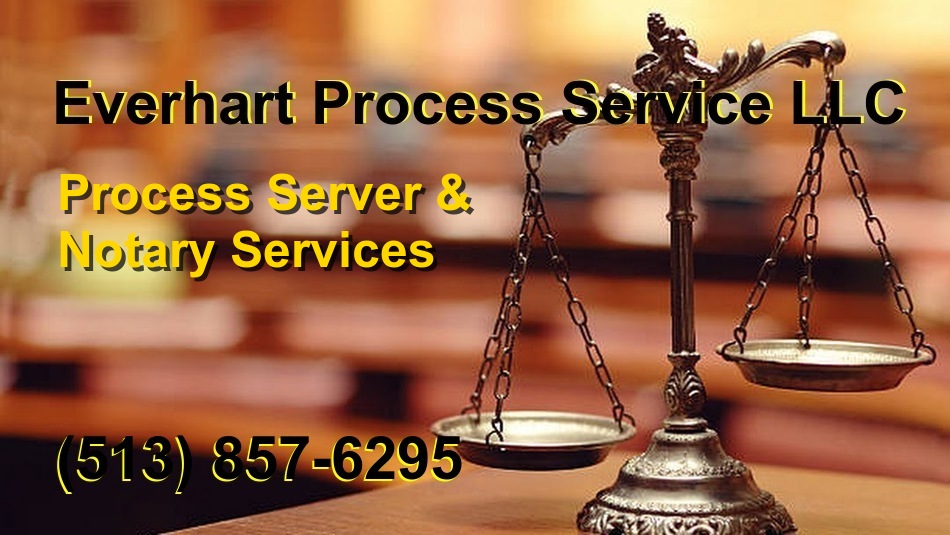 Eviction Process in Utah
Eviction Process in Utah
The first step in the Utah Eviction Process is terminating the landlord tenant relationship by serving a Utah Eviction Notice. In Utah, there are different kinds of Eviction Notices for different situations. The most common is the 3 Day Pay or Vacate Notice which is used to evict a tenant for not paying the rent. It gives the tenant 3 days to pay the rent, vacate, or else be sued for eviction. Another common Utah Eviction Notice is the 3 Day Notice to Comply or Vacate which is used to evict a tenant for not following the terms of the lease.
A Utah landlord must serve a 15 Day No Cause Notice in order to end a month to month lease or give the tenant notice that a regular lease will not be renewed. Before serving this notice, the landlord should look carefully at the written lease, as it may require 30 days notice instead of 15.
In order to evict a guest who will not leave, or evict a tenant who has stayed past the end of their lease, the landlord must serve a 5 Day Tenant at Will Notice to the tenant.
Utah Eviction Laws
The landlord tenant laws in Utah regarding the Utah Eviction Process These laws are statutory, meaning they were passed by the Utah State Legislature. If you are a landlord in Utah, it is a good idea to read and become familiar with these laws.
You should also read the Laws for Real Estate- Deposits and renting https://le.utah.gov/xcode/Title57/57.html
 DOWNLOAD FORMS YOU WILL NEED FOR THE EVICTION IN UTAH
DOWNLOAD FORMS YOU WILL NEED FOR THE EVICTION IN UTAH
Utah Landlord Notices for Eviction / Unlawful Detainer Forms Package
The Utah Rental Agreement
Utah Residential Landlord Tenant Rental Lease Forms and Agreements Package
Utah Eviction Notices
The first step in the Utah Eviction Process is terminating the landlord tenant relationship by serving a Utah Eviction Notice. In Utah, there are different kinds of Eviction Notices for different situations. The most common is the 3 Day Pay or Vacate Notice which is used to evict a tenant for not paying the rent. It gives the tenant 3 days to pay the rent, vacate, or else be sued for eviction. Another common Utah Eviction Notice is the 3 Day Notice to Comply or Vacate which is used to evict a tenant for not following the terms of the lease.
A Utah landlord must serve a 15 Day No Cause Notice in order to end a month to month lease or give the tenant notice that a regular lease will not be renewed. Before serving this notice, the landlord should look carefully at the written lease, as it may require 30 days notice instead of 15.
In order to evict a guest who will not leave, or evict a tenant who has stayed past the end of their lease, the landlord must serve a 5 Day Tenant at Will Notice to the tenant.
Methods of Serving the Utah Eviction Notice
There are a few different methods of properly serving a Utah Eviction Notice. Service must be done properly, and the landlord must be able to prove the service was done property, in order for service to be effective: -Personal Delivery is where the landlord literally hands the tenant the Eviction Notice. -Posting. This is where the landlord post the Eviction Notice in a conspicuous place on premises because no body answered the door. -Registered or Certified Mail. Do this at the post office so you get the receipt. -Hand Deliver the Eviction Notice to a person of “suitible” age who is at the premises, AND mail the notice (both must be done for service to be effective).
Unlawful Detainer
After the tenant has been served, and the notice time has expired, the next step in the Utah Eviction Process is the landlord filing a lawsuit against the tenant called a “Unlawful Detainer” lawsuit. The landlord files this in the District Court for the area where the property is located. If not sure, the landlord should call a District Court to find out. Upon paying a filing fee, the District Court Clerk will prepare a Summons and Complaint. This will be delivered to the tenant by the Sheriff or Constable telling the tenant they are being sued for eviction, and that they have 3 days to answer the Complaint. If the tenant does not answer in the 3 days, then the landlord wins the case automatically (called a default judgment). If the tenant does answer, then the case proceeds as a civil case, and ultimately the judge or jury will render a decision after a hearing or a trial.
Order of Restitution
After the landlord has won a judgment against a tenant (by default or otherwise), and the tenant still has not vacated, the next step in the Utah Eviction Process is the landlord obtaining an Order of Restitution. This is a court order that directs the Sheriff or Constable to forcibly remove the tenant.
The court eviction process happens quickly. Do not ignore notices that have been served on you.
When calculating the time in which to do something after service of notice, the day on which service occurs is day 0, the day after service is day 1, and so on. Time stated as “calendar days” includes Saturday, Sunday and holidays in the calculation. Time stated as “business days” does not. Whatever is required to be done must be done on or before the last day. See also URCP 6.
Communicate in writing with your landlord or tenant. If your landlord or tenant agrees to something, get it in writing and signed.
Keep a copy of everything for your records, including all notices and court papers.
A tenant may evict a subtenant for the same reasons and using the same procedures as described on this page. Utah Code Section 78B-6-804.
A tenant includes a subtenant, a guest or a relative, even if not paying rent.
Utah Legal Services (utahlegalservices.org) also has information and forms for the tenant and landlord.
Notice to vacate (unlawful detainer)
The first step in the eviction process is for the landlord to serve the tenant with a notice to vacate. The required type of notice is governed by Utah Code Section 78B-6-802. If the tenant remains in possession of premises after receiving and failing to comply with notice to vacate, they are in “unlawful detainer.”
The notice must be in writing, and it must strictly follow the statutory requirements.
3-day notice to pay or vacate
This notice is used if the tenant owes rent or other money. This notice tells the tenant s/he has 3 calendar days to pay the money or move out. It must give the tenant the option to pay the money. If the tenant pays the money, then the tenant can remain on the premises. If the tenant does neither within 3 calendar days after notice, the tenant is “unlawfully detaining” the premises.
3-day notice to comply with rental agreement or vacate
This notice is used if the tenant has violated a term of the rental agreement that can be corrected. This notice tells the tenant s/he has 3 calendar days to comply with the agreement or move out. If the tenant complies with the agreement, then the tenant can remain on the premises. If the tenant does neither within 3 calendar days after notice, the tenant is “unlawfully detaining” the premises.
3-day notice to vacate for assigning or subletting contrary to rental contract
This notice is used if the tenant has allowed someone else to live in the premises in violation of the rental contract. This notice orders the tenant to move out within 3 calendar days. It does not have to give the tenant any other options. If the tenant does not move out within 3 calendar days after notice, the tenant is “unlawfully detaining” the premises.
3-day notice to vacate for committing criminal act on the premises
This notice is used if the tenant has committed a criminal act, but not necessarily rising to the level of criminal nuisance. If the criminal act meets the criteria for criminal nuisance, the landlord should use that notice instead. This notice orders the tenant to move out within 3 calendar days. It does not have to give the tenant any other options. If the tenant does not move out within 3 calendar days after notice, the tenant is “unlawfully detaining” the premises.
3-day notice to vacate for committing waste on the premises
This notice is used if the tenant is damaging or has damaged the landlord’s property, but not necessarily rising to the level of nuisance. If the damage caused by the tenants meets the criteria for either nuisance or criminal nuisance, the landlord should use the appropriate nuisance notice instead. This notice orders the tenant to move out within 3 calendar days. It does not have to give the tenant any other options. If the tenant does not move out within 3 calendar days after notice, the tenant is “unlawfully detaining” the premises.
3-day notice to vacate for engaging in unlawful business on or in the premises
This notice is used if the tenant is engaging in an unlawful business on the landlord’s property, but not necessarily rising to the level of nuisance. If the business meets the criteria for either nuisance or criminal nuisance, the landlord should use the appropriate nuisance notice instead. This notice orders the tenant to move out within 3 calendar days. It does not have to give the tenant any other options. If the tenant does not move out within 3 calendar days after notice, the tenant is “unlawfully detaining” the premises.
3-day notice to vacate for lease violation which cannot be brought into compliance
This notice is used if the tenant has violated the lease and there is no way that they can fix it so that they comply. This notice orders the tenant to move out within 3 calendar days. It does not have to give the tenant any other options. If the tenant does not move out within 3 calendar days after notice, the tenant is “unlawfully detaining” the premises.
3-day notice to vacate for nuisance
This notice is used if the tenant is creating a nuisance. A nuisance is something which interferes with someone else’s comfortable enjoyment of their life or property, and can include anything which injures health, is indecent, offensive to the senses, or interferes with someone’s free use of property. There are two types of nuisance: criminal nuisance and non-criminal nuisance.
Examples of non-criminal nuisance include:
- Disturbing other tenants or neighbors.
- Having parties so frequently as to interfere with any neighbor’s quiet enjoyment.
- Having so many visitors so frequently as to interfere with any neighbor’s quiet enjoyment.
- Smoking, and the tenant’s tobacco smoke drifts into another rental unit, but only if the landlord prohibits smoking in all units.
- Buying, selling, manufacturing, storing, or dispensing illegal drugs or ingredients for illegal drugs.*
- Gambling which interferes with any neighbor’s quiet enjoyment. *
- Regularly committing prostitution or promoting prostitution. *
- Weapons violations contrary to Utah Code section 76-10-501 et seq.
- Committing criminal acts along with another person. These acts are determined by statute, but may include such things as assault, homicide, kidnapping, felony sexual offenses, sexual exploitation of a minor, destruction of property, burglary, criminal trespass, robbery, aggravated robbery, theft, fraud, extortion, bribery, explosives offenses, weapons offenses, pornography, communications fraud.*
- If these acts meet the definition for criminal nuisance, the landlord should instead use a criminal nuisance notice.
Examples of criminal nuisance include:
- Committing a felony.
- Committing a criminal act affecting the health or safety of a tenant, the landlord, the landlord’s agent, or other person on the landlord’s property.
- Committing a criminal act causing damage or loss to any tenant’s property or the landlord’s property.
- Committing a drug or gang related criminal act.
- Threatening violence against any tenant or other person on the premises, or against the landlord or the landlord’s agent.
- Committing any other criminal act that directly impacts the peaceful enjoyment of the premises by any tenant or neighbor, for example, violating building or health codes.
3-day notice to vacate
This notice may be used only if a tenant:
- has assigned or sublet the premises contrary to the rental agreement;
- is damaging the landlord’s premises;
- conducts an unlawful business on the premises;
- has violated a term of the rental agreement that cannot be corrected; or
- commits a criminal act on the premises.
This notice orders the tenant to move out within 3 calendar days. It does not have to give the tenant any other options. If the tenant does not move out within 3 calendar days after notice, the tenant is “unlawfully detaining” the premises.
15-day notice to vacate
This notice can be used if the tenant is renting the premises from month to month (or some other period), and the landlord wants the tenant to move out at the end of the month. The landlord does not have to have a reason for wanting the tenant to vacate. The notice must be served at least 15 calendar days before the end of the month. Otherwise, the tenant can stay until the end of the next month. If the rental agreement requires that more than 15 days notice be given, the landlord must give the longer notice required by the agreement.
This notice orders the tenant to move out within 15 calendar days. It does not have to give any other options. If the tenant does not move out within 15 calendar days after notice, the tenant is “unlawfully detaining” the premises.
5-day notice to vacate to tenant at will
This notice can be used only if there is no rental agreement, oral or written. This situation may occur if:
- a guest refuses to leave;
- the rental agreement has expired and the landlord has told the tenant that the contract will not be renewed;
- a new owner has purchased the premises through bankruptcy, foreclosure, or sheriff’s sale and has received a title terminating all rental contracts. (If the new owner is evicting a tenant after purchasing the premises in a regular sale and the tenant is on a month-to-month tenancy, the new owner must serve the tenant with a 15-day notice. Otherwise, the tenant has a right to live in the home until the rental agreement expires.)
This notice orders the tenant to move out within 5 calendar days. It does not have to give the tenant any other options. If the tenant does not move out within 5 calendar days after notice, the tenant is “unlawfully detaining” the premises.
How to serve the notice to vacate; Utah Code Section 78B-6-805.
The notice to vacate must be served on the tenant as required by Section 78B-6-805. The notice to vacate may be served by any person, including the landlord:
- by delivering it to the tenant personally;
- by mailing it registered or certified mail to the tenant at the tenant’s residence;
- if the tenant is absent from the residence, by leaving it with a person of suitable age and discretion and also mailing it to the tenant at the tenant’s residence; or
- if a person of suitable age or discretion cannot be found at the tenant’s residence, by affixing it in a conspicuous place on the premises.
Saving the lease from forfeiture; Utah Code Section 78B-6-802.
Some of the notice types require that the tenant be given the option to move out or to pay the rent (or to perform a requirement of the rental agreement). If the tenant pays the rent or does whatever else is required to be done, then the tenant is not “unlawfully detaining” the premises and cannot be evicted. This is called “saving the lease from forfeiture.”
A landlord can accept payment for part of the rent and then serve another 3-day notice to pay or vacate. Or the landlord and tenant can agree about when the remaining rent will be paid.
Court proceedings
If the tenant is “unlawfully detaining” the premises—that is, has failed to comply with proper notice properly served—the tenant can be evicted by court order. For court forms see our OCAP page.
Complaint; Utah Code Section 78B-6-807.
The complaint to evict must describe the facts that constitute unlawful detainer—essentially that the tenant has been properly served with notice to vacate that is appropriate for the circumstances, has failed to comply with the notice, and remains in possession of the premises. The complaint may also allege any fraud, force, or violence on the part of the tenant, and may claim damages and compensation for the occupation of the premises. If the eviction is for failure to pay rent, the complaint must state the amount of rent due.
Summons; Utah Code Section 78B-6-807.
The summons in an eviction is similar to the summons in any civil case. It states the time in which the tenant is required to answer or face judgment by default. And it must contain the other information required by URCP 4. However, the time to answer is very short: usually only 3 business days from the date of service, unless the tenant objects and the court allows more time.
Serving the complaint and summons
Serving the complaint and summons on the tenant is governed by URCP 4 and Utah Code Section 78B-6-807. The complaint and summons may be served by any person over 18 who is not a party to the case or a party’s lawyer. This means that the landlord may not personally serve the summons. For more information and forms, see our page on Serving Papers. The landlord is responsible for filing proof of service with the court. If the tenant can’t be found, or if they are avoiding service, or if their identity is unknown, or if service on all of the tenants isn’t practical, the plaintiff may file a motion requesting service by alternative means. For more information and forms, see our Alternative Service page.
Who is the plaintiff?
A complaint to evict the tenant must name the property owner as plaintiff. See Utah Code Section 78B-6-801 and URCP 17.
Who is the defendant? Utah Code Section 78B-6-806.
The tenant and anyone who has signed the lease can be named as defendants. If there is a subtenant occupying the premises, the subtenant also can be named as a defendant. The landlord may, but does not have to, sue all of them. But the landlord can obtain a judgment only against those who are served with process or appear in the proceedings.
Answering the complaint
Once the complaint and summons are served on the tenant, the tenant may file a written answer with the court within the time stated in the summons. The tenant must serve a copy of the answer on the landlord by one of the methods described in URCP 5. For more information and forms for filing an answer, see our page on Answering a Complaint or Petition. Tenants can find information about answering a complaint(utahlegalservices.org) and possible legal defenses, including habitability problems (utahlegalservices.org), through Utah Legal Services.
Tenant fails to answer
If the tenant does not file an answer to the complaint and summons within the time frame ordered by the court, the landlord may file for a default judgment and ask the court to issue an order of restitution of the premises.
Criminal nuisance
If the complaint alleges an offense designated by Section 78B-6-810 as a criminal nuisance, the court will hold an evidentiary hearing within 10 days after the day on which the complaint is filed to determine whether the alleged act occurred. The hearing will be set when the complaint is filed and notice of the hearing must be served upon the tenant with the summons at least 3 calendar days before the scheduled time of the hearing.
Occupancy hearing; Utah Code Section 78B-6-810.
The judge will hold a hearing within 10 days after the day on which the tenant files an answer if:
- the complaint to evict claims failure to pay rent; or
- the new owner of the premises is evicting the former owner after a forced sale.
At the hearing the judge will determine who has the right to occupy the premises while the case moves forward. If the tenant fails to appear at the hearing after having received notice of it, the judge will issue an order for restitution of the premises directing the sheriff or constable to return possession of the premises to the landlord.
If the judge finds that all of the issues can be decided without further proceedings, the judge will decide those issues and enter judgment on the merits. If the judge decides there is a need for further proceedings and the tenant remains in possession of the premises, the judge will begin the trial within 60 days after the day on which the complaint was served unless the parties agree otherwise.
Trial
If an answer is filed, then all parties must follow the Rules of Civil Procedure governing discovery and disclosure. For more information, see our page on Discovery and Disclosure. Because evictions occur quickly, there may be court hearings scheduled before either party needs to make initial disclosures. For more information about civil procedures, see our page on Summary of Civil Procedures.
Judgment for restitution, damages and rent; Utah Code Section 78B-6-811.
If the judge enters judgment for the landlord—whether after trial or after the occupancy hearing; whether by deciding the merits of the claims or after the tenant’s default—the judgment will include an order for restitution of the premises directing the sheriff or constable to return possession of the premises to the landlord.
If the complaint to evict claims failure to pay rent or failure to perform a requirement of the rental agreement, the judgment will also end the rental agreement, but the tenant still owes the rent for the remainder of the agreement, limited by the landlord’s duty to reduce damages, usually by renting the premises to someone else.
The judgment may also award to the landlord the rent for the time the tenant lawfully possessed the premises and three times the actual damages from:
- rent and other money due under the contract for the time the tenant unlawfully detained the premises;
- forcible entry;
- forcible or unlawful detainer;
- waste of the premises; and
- the abatement of the nuisance by eviction.
The judgment may also include the landlord’s reasonable attorney fees, and this amount is not tripled. The landlord must prove all of these damages and the rent and the attorney fees, and this is often done by the landlord filing an affidavit describing these items.
Even if the tenant defaults (does not answer the complaint), the landlord must serve the tenant with the affidavit of damages and notice of any hearing to determine damages. URCP 5.
Order for restitution of the premises; Utah Code Section 78B-6-812.
The restitution order:
- directs the tenant to vacate the premises, remove the tenant’s personal property, and restore possession of the premises to the landlord, or be forcibly removed by a sheriff or constable;
- advises the tenant of deadline to vacate the premises, which is usually 3 calendar days following service of the order, but it might be less; and
- advises the tenant of the tenant’s right to a hearing to contest the manner in which the order is enforced.
The restitution order and a form for the tenant to request a hearing must be served on the tenant by a peace officer, a sheriff or constable, or a private investigator. The restitution order and form must be served by one of the methods for serving notice to vacate, unless those methods are impossible or impracticable. If those methods are impossible or impracticable, service may be made by mailing the order and form by first class mail to the tenant’s last-known address and posting them at a conspicuous place on the premises.
The date of service, the name, title, signature, and telephone number of the person serving the order and the form must be legibly written on the order and form served on the tenant. The person serving the order and form must file proof of service under URCP 4. For more information and forms, see our page on Proof of Service.
Hearing on the Order of Restitution; Utah Code Section Section 78B-6-812.
The tenant may request a hearing if they disagree with the way in which the Order of Restitution is enforced. The landlord must serve a blank Request for Hearing form on the tenant along with a copy of the court’s Order of Restitution. You can also find the Request for Hearing in the Forms section below. Possible reasons to request a hearing include:
- The tenant was not properly served with a copy of the Order of Restitution.
- The tenant was not given the time period ordered by the court to voluntarily vacate the premises.
- The tenant’s property is not being stored in a suitable place and/or in a reasonable manner.
- The removal and storage costs charged to to the tenant are unreasonable.
- The tenant was not provided with a copy of the inventory of the property removed.
- The tenant demanded return of their property within 30 days of the date it was removed and paid all costs associated with its removal and storage, but the property was not returned.
- A written notice of the time and place of sale of the tenant’s property was not mailed to to the tenant.
- The tenant attended the sale of their property, but the remainder of the property was not released to them after costs of removal, storage, advertising, and conducting the sale were recovered.
- The tenant did not attend the sale of their property, and the remaining proceeds of the sale were not returned after deducting costs of removal, storage, advertising, and conducting the sale and paying plaintiff’s judgment.
- A person who was not a defendant in the case delivered a written demand for the release of their property to the constable or sheriff, and provided proper identification and evidence of ownership, but the property was not returned.
The court will set the hearing within 10 calendar days from the filing of the Request for Hearing or as soon as possible after that.
If the tenant wants the court to stay the Order of Restitution until the hearing, they must post a bond with the court. The bond must be in an amount that would be enough to pay the landlord’s probable costs, attorney fees and damages if the court decides in favor of the landlord. Any prepaid rent is a portion of the tenant’s bond. If the court does not stay the order, the tenant must obey the order and vacate the premises.
A Request for Hearing is not the same as appealing the judge’s decision. See the Appeal section for more information about that process.
Forced eviction; Removal of tenant’s personal property; Utah Code Section Section 78B-6-812.
If the tenant fails to comply with the order for restitution of the premises, a sheriff or constable may enter the premises by force using the least destructive means possible to remove the tenant.
The sheriff or constable may remove the tenant’s personal property and store it. The tenant may not recover the property until the moving and storage costs have been paid. However, the tenant must be provided reasonable access within 5 business days to retrieve:
- clothing;
- identification;
- financial documents, including all those related to the tenant’s immigration status or employment status;
- documents about the receipt of public services; and
- medical information, prescription medications, and any medical equipment required for maintenance of medical needs.
If the tenant does not pay the moving and storage costs and recover the personal property within 15 calendar days, the property is considered abandoned and may be sold or donated. For more information, see our page on Tenant’s Personal Property.
Appeal
Except for a complaint for eviction claiming nuisance, a party may appeal within 10 business days after the judgment is entered. In a nuisance action, a party may appeal within 3 business days after the judgment is entered. Utah Code Section 78B-6-813 and URCP 6.
Possession bond; Utah Code Section 78B-6-808
The purpose of a possession bond to allow the landlord to take possession of the premises while the eviction case moves forward, and, at the same time, to have money to pay the tenant’s damages if, in the end, the landlord is not entitled to possession. But a possession bond may not be needed. Eviction cases are designed to conclude quickly. The landlord may prefer simply to wait to take possession, since resolving disputes about the possession bond does take time.
If the landlord wants to take possession of the premises before the occupancy hearing or before the trial, the landlord can file a possession bond. The judge must approve the amount of the bond. The amount must be sufficient to pay the tenant’s probable costs and damages if the court awards judgment for the tenant and against the landlord. The bond may be a corporate or cash bond or certified funds. A cash bond is money deposited with the court. The court will hold the money in trust until the case is finished. If the landlord wins, the court will return the money to the landlord upon request.
The bond may be a property bond executed by two persons who own real property in the state and who are not parties to the action. A property bond must meet the requirements of URCP 72.
The landlord must notify the tenant that the possession bond has been filed. This notice must be served in the same manner as service of summons. For more information, see the section of this page titled Serving the complaint and summons. The notice must inform the tenant of all of the remedies and procedures available to the tenant under Utah Code Section 78B-6-808(4).
Remedies and procedures available to tenant after landlord’s possession bond
The tenant has the following remedies and procedures available after landlord’s possession bond:
- Within 3 business days after being served with notice of the bond, the tenant may demand a hearing, which must be held within 3 business days after the tenant’s demand.
- If the eviction is based solely upon failure to pay rent or other money due, the rental agreement will remain in force and the complaint will be dismissed if the tenant, within 3 calendar days after service of the notice of the possession bond, pays accrued rent, all other money due, and other costs, including attorney fees, as provided in the rental agreement.
- For any eviction, the tenant may remain in possession of the premises by filing a counter bond. The counter bond must meet the same requirements as the original possession bond. Any prepaid rent is a portion of the tenant’s counter bond.
- The tenant must file the counter bond within 3 business days after service of notice of the landlord’s possession bond or within 24 hours after the court sets the amount of the counter bond, whichever is later, unless the court allows additional time.
If the tenant does not comply with any of the remedies and procedures, the court will enter an order for restitution of the premises directing the sheriff or constable to return possession of the premises to the landlord.
Hearing demanded by the tenant
If the court rules after the hearing demanded by the tenant that the landlord is entitled to possession of the premises, the court will enter an order for restitution of the premises directing the sheriff or constable to return possession of the premises to the landlord. If the court allows the tenant to remain in possession and if further issues must be decided, the court will require the tenant to post a counter bond. The court will expedite the remaining proceedings. If the court rules that all issues between the parties can be decided without further proceedings, the court will decide who wins.
Damages
If there is no unlawful detainer or the landlord or tenant wants only to sue for damages, the landlord or tenant can file a small claims case or a civil case depending on the amount of damages claimed.
Refunding deposits
The landlord must deliver to the tenant the balance of a refundable deposit and any pre-paid rent with a written itemization of any deductions, such as payment of accrued rent, damages to the premises beyond reasonable wear and tear, other costs provided for in the contract and cleaning the premises. Utah Code Section 57-17-1.
If any part of the deposit is non-refundable, the rental agreement must say that. This must be stated in writing to the tenant when the deposit is taken by the landlord. Utah Code Section 57-17-2.
Upon termination of the tenancy, the landlord may apply deposits toward the payment of rent, damages to the premises beyond reasonable wear and tear, other costs and fees provided for in the rental or lease agreement, or cleaning of the premises. Utah Code Section 57-17-3(1).
No later than 30 days after the day the tenant vacates and returns possession of the rental property to the landlord, the landlord must deliver to the tenant at the tenant’s last known address the balance of any deposit, the balance of any prepaid rent, and a written notice itemizing and explaining any reason for any deduction the landlord made from the deposit or prepaid rent. Utah Code Section 57-17-3(2).
If the landlord fails to follow the requirements of Utah Code Section 57-17-3(2), the tenant may serve the landlord or the landlord’s agent a notice that states the names of the parties to the rental agreement, the day the tenant vacated the rental property, that the landlord failed to comply with Utah Code Section 57-17-3(2), and the address where the landlord may send the deposit or remaining deposit funds. For a sample notice, see the forms section below.
- The tenant may recover from the landlord, if the tenant has served the required notice:
- The full deposit if the landlord fails to timely return the balance of the tenant’s deposit;
- The full amount of prepaid rent if the landlord fails to timely return the balance of the tenant’s prepaid rent; and
- A civil penalty of $100.
The tenant may file an action in district court to enforce the landlord to comply with the requirements of Utah Code Sections 57-17-1 through 5
Subsidized housing
Under Code of Federal Regulations Title 24, Chapter VIII (law.cornell.edu) landlords must take special steps to evict a tenant from government subsidized housing. Tenants should promptly contact Utah Legal Services(utahlegalservices.org) for information and assistance. More information is available in the Utah Legal Services’ Renter’s Handbook (utahlegalservices.org). See the sections on “Section 8 Problems” and “Subsidized Housing.” Landlords may also want to contact the Utah Apartment Association (uaahq.org).
Tenants of foreclosed properties
If you are renting premises being foreclosed, the Helping Families Save Their Homes Act of 2009 gives some tenants the right to stay in a foreclosed property up to 90 days after the date of foreclosure or through the end of their lease, depending on whether the property will be used as a primary residence by the new owner. The tenant must continue to pay rent to the new owner, but identifying the owner may be difficult. Contact an attorney who handles foreclosure or housing cases to see if this law applies to your situation.
The former owner of premises that are foreclosed can be evicted by the new owner using regular eviction procedures. Utah Code Section Section 78B-6-802.5.
Tenants in Mobile Home Parks
If a tenant rents a mobile home, the landlord can evict the tenant from the mobile home using the procedures on this page. However, eviction of an owner-resident of a mobile home follows different procedures governed by Utah Code Title 57, Chapter 16, Mobile Home Park Residency Act. The Utah Legal Services (utahlegalservices.org) website may provide useful information.
Forms
Forms for the landlord
- Eviction notices
Read the information in the Notice to vacate (unlawful detainer) section to help choose the appropriate notice.
-
-
- Use OCAP to prepare the eviction notice
-
or
-
- 3-day notice to pay or vacate –
 PDF |
PDF |  Word
Word - 3-day notice to comply with rental agreement or vacate –
 PDF |
PDF |  Word
Word - 3-day notice to vacate for assigning or subletting contrary to rental contract –
 PDF |
PDF |  Word
Word - 3-day notice for committing criminal act on the premises –
 PDF |
PDF |  Word
Word - 3-day notice to vacate for committing waste on the premises –
 PDF |
PDF |  Word
Word - 3-day notice to vacate for engaging in unlawful business on or in the premises –
 PDF |
PDF |  Word
Word - 3-day notice to vacate for lease violation which cannot be brought into compliance –
 PDF |
PDF |  Word
Word - 3-day notice to vacate for non-criminal nuisance –
 PDF |
PDF |  Word
Word - 3-day notice to vacate for criminal nuisance –
 PDF |
PDF |  Word
Word - 5-day notice to vacate to tenant at will –
 PDF |
PDF |  Word
Word - 15-day notice to vacate –
 PDF |
PDF |  Word
Word
- 3-day notice to pay or vacate –
-
- Other documents
Use OCAP to
-
- prepare eviction documents to be filed in court (including complaint, summons and order of restitution)
- prepare possession bond documents to be filed in court
- prepare judgment for damages to be filed in court
Forms for the tenant
- Use OCAP to
- prepare an answer to the complaint
- prepare a response to a possession bond
- Request for Hearing on Order of Restitution –
 PDF |
PDF |  Word
Word - Motion to Set Aside Judgment
Utah Legal Services eviction forms
- Basic guide to answering an eviction complaint (utahlegalservices.org) –
 PDF
PDF - Request for Return of Personal Property (utahlegalservices.org) –
 PDF
PDF
Forms and other information for landlords and tenants
- Tenant’s Notice to Provide Deposit Disposition –
 PDF |
PDF |  Word
Word - Utah Legal Services (utahlegalservices.org)
- Utah Apartment Association Good Landlord Program (uaahq.org)
Resources for Evicted Tenants
- 211 (uwsl.bowmansystems.com)
- Homeless Shelters (uwsl.bowmansystems.com)
- Utah Housing Authorities (utahhousingcorp.org)
- Utah Legal Services Renters’ Handbook (utahlegalservices.org)
- Tenants can view helpful pages when they are being evicted> Tenants Help Pages
For names of lawyers in your area who are experienced in housing issues,
Find Law Firms on our Directory.
Find The Eviction Process in other States
Nationalevictions.com is for people who are renting or seeking to rent housing. Our site is for Eviction Information Purposes only, Not Intended to replace your Attorney or any Legal Advice. The reader should always remember your legal responsibilities. After all, you may unknowingly jeopardize your rights by not fulfilling your legal rights as a Tenant or Landlord.
Many of the Chapters and Articles are interrelated. This not intended to be an all-inclusive overview, or the best advice in every situation. Please Consult a Lawyer for your Rights and Protection as to the laws of your State. This information is not meant to be a substitute for the advice of an Attorney.













